Most homeowners would agree that having a uniformly green, lush, and well-manicured lawn is the epitome of home ownership satisfaction. People go to great extents by applying fertilizers, watering regularly, aerating, and mowing the lawn every now and then to keep their lawns looking the best. However, there is another problem! Let’s talk about dallisgrass vs crabgrass.
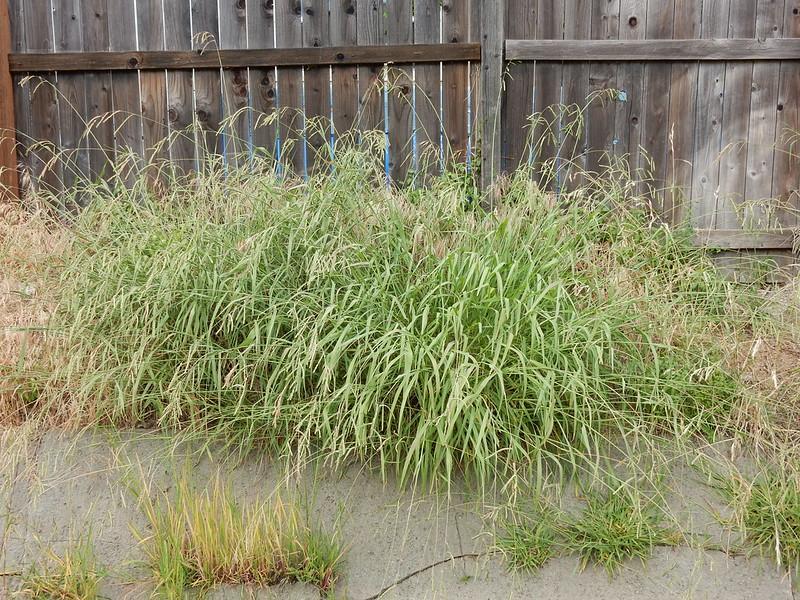
Dallis grass is a strongly tufted, leafy, sod-forming perennial grass.

Crabgrass is a common name for plants of the genus Digitaria that contain annual & perennial grasses.
When you want to have a perfectly manicured lawn, weeds will frequently stand in your way. They can grow to be quite tall and skinny, towering over the grass, almost as if they are poking fun at the grass. Weeds will always ruin the look of your lawn, which detracts from the overall pretty and enjoyable landscape you want to create.
Crabgrass and Dallisgrass are two such plants. Although they are very dissimilar to one another, both of these plants are considered to be weeds and can be a source of considerable frustration in a yard. Crabgrass has broader leaves and grows at a lower height than Dallisgrass, which grows erect and can reach lofty heights.
If these weeds were placed side by side, it would not be difficult to differentiate between them. However, if you are someone who is unaware of these two weeds or the methods that may be used to control them, keep reading!
Dallisgrass Vs. Crabgrass | Difference Table
| Crabgrass | Dallisgrass |
| Annual Grass. | Perennial Grass. |
| New plants of crabgrass develop only from germinating seeds each year. | Dallisgrass can reappear from the roots each year, making it a more resilient weed than crabgrass. |
| It spreads out in a pattern that looks like a star. | It spreads outward in circles and clumps as it grows. |
| It grows by generating a dense mat of vegetation that is tangled with numerous side branches. | Dallisgrass develops short rhizomes, which are underground stems that grow continually. |
| Nitrogen fertilizers do not affect crabgrass, and it does not respond to their application. | When treated with nitrogenous fertilizers, Dallisgrass experiences rapid and extensive growth. |
| Crabgrass can be prevented from germinating by using pre-emergent and post-emergent herbicides. | If you wish to stop Dallisgrass from germinating, you must dig it up completely. |
| The Dallisgrass plant can thrive in various environments, whether dry, freezing, or moist. | Dry, hot conditions are ideal for the growth and survival of crabgrass. |
| Leaf-blade width: 2/5- to 1/2-inch | Leaf-blade width: 1/4–1/2 inch |
| Soil Type: Sandy Compact | Soil Type: sandy and heavy clay soils |
RELATED: How Many Types Of Crabgrass Are There? A Comprehensive Guide
Dallisgrass Overview
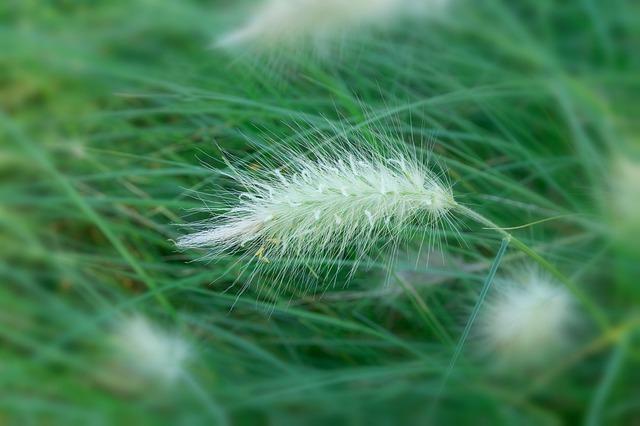
Dallisgrass is a grassy weed that appears during the warmer parts of the year.
Dallisgrass is coarse grass that grows in clumps and is propagated by rhizomes. It can be recognized by the grayish-green color of its leaves as well as the hairs that develop on the leaf collar and, in some cases, also on the base of the leaf blade.
Since Dallisgrass grows to form thick and stiff clumps than most other types of grass, it might become a tripping hazard in some situations for people walking across a lawn. In addition, since Dallisgrass has small rhizomes which are continuously growing underground stems, there is no such thing as a Dallisgrass seed.
Dallisgrass is more likely to achieve rapid root establishment when the soil is moist. And since Dallisgrass can regenerate from its root system year after year, it is one of the most damaging weeds you will ever come across on a lawn.
Crabgrass Overview
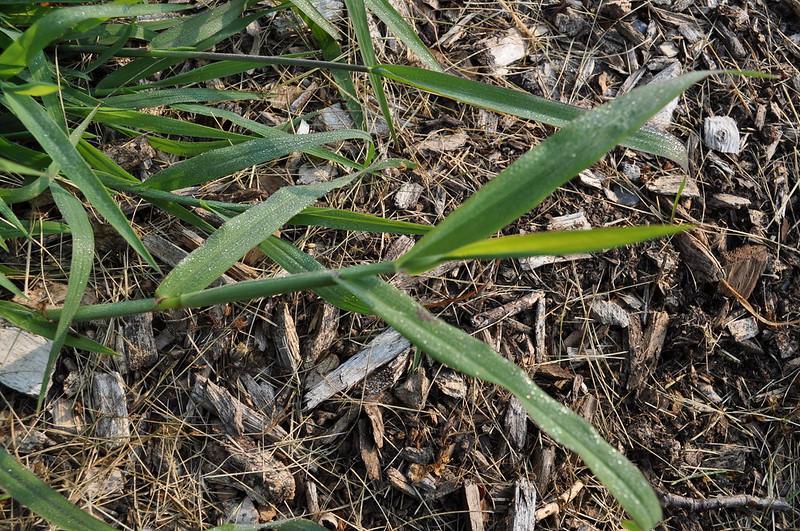
In lawns, crabgrass is very obvious. It is a coarse-textured grass with a yellowish-green color.
Crabgrass is an annual weed that takes advantage of bare places and thin areas in your lawn to establish a robust root system and spread. A single crabgrass plant can generate thousands of seeds before it withers and dies in the fall.
These seeds remain viable for germination the following spring. Since crabgrass maintains a low profile in the lawn, it can avoid being cut by the mower blade when the lawn is being trimmed. In addition, there is not much that can “break” on it, which means that it can withstand foot traffic quite well, especially in high-traffic areas.
The one portion of the plant that sticks up on the weed, which is the stalk that carries its blooms and, later, its seeds, is highly resilient and does not care about being trampled on at all. Crabgrass reproduces by seeds germinating from spring to late summer when the soil temperature is 55 degrees Fahrenheit for at least three consecutive days.
RELATED: Crabgrass Vs. Quackgrass | How To Tell The Difference & Which Is Worse?
Crabgrass Vs. Dallisgrass | Appearance
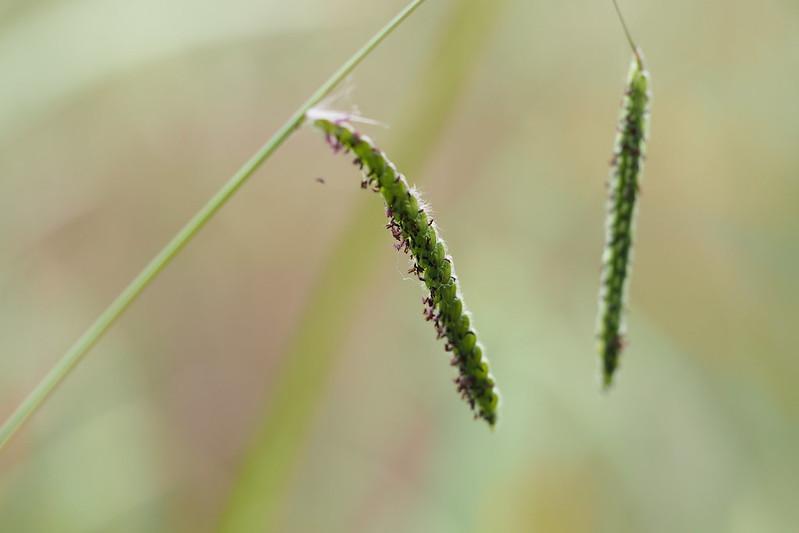
The most defining feature of Dallisgrass is its characteristic seed heads.
You can’t win a battle against something you’re not even aware of. It is highly intriguing to compare two lawn weeds that are equally annoying, especially to someone who is interested in fun activities. Both Dallisgrass and crabgrass are detrimental to your lawn regardless of which one you choose to discuss.
The distinctive seed head of Dallisgrass, which often gets away from the mower reel, is an identifying feature of the plant. The spring and summer months are the primary times for its germination, while it goes dormant during the winter months. In addition, you can identify Dallisgrass by its grass blades which will be a darker shade of matte green.
On the other hand, crabgrass identification is somewhat tricky. Crabgrass can take on a range of colors and growth patterns, depending on the type present in your lawn and the frequency with which you apply fertilizers. In most cases, the blades of crabgrass branch out at an angle from the stem, and their growth is constant as new blades emerge.
If it is not mowed, it will continue to develop and eventually produce a thick mat of vegetation clumped together with a lot of side branches.
Dallisgrass Vs. Crabgrass Control
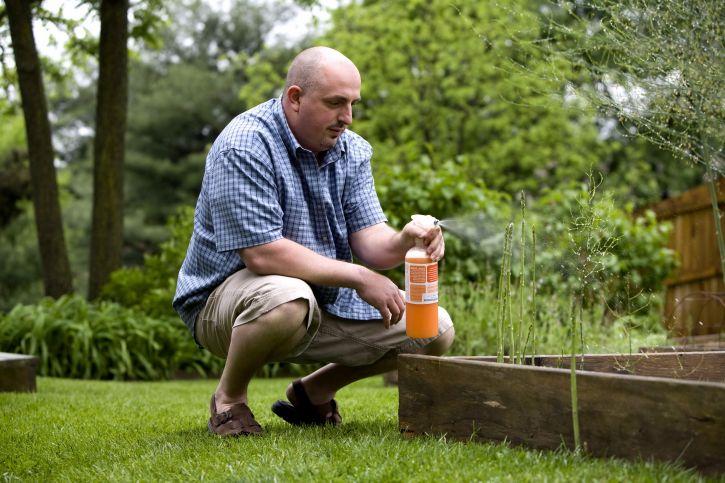
Selective herbicides are the quickest and easiest way to eliminate crabgrass and Dallisgrass.
The most effective method for controlling crabgrass is using a pre-emergent herbicide at the beginning of the growing season, well before the weed seeds can germinate. Then, if you apply a second coat of treatment during the optimal time window, you will be able to get a more significant number of the seeds that are present and ready to germinate.
On the other hand, once Dallisgrass has established itself in your garden, it is very challenging to remove it altogether. Therefore, in order to keep the lawn healthy and free of any weeds, you will need to pay special attention to maintaining a balanced fertilization regimen and maintaining a regular mowing routine.
Below are a few more tips for controlling these two weeds in your yard.
RELATED: How To Get Rid Of Crabgrass For Good? | Prevent Crabgrass From Returning
Use Weed Control Products
Sulfonylurea Herbicide
This potent herbicide interferes with the enzyme system of the weeds. This disrupts the protein synthesis in weeds, and the disruption of the chain will, in the end, result in the weeds being destroyed. However:
- Keep it out of your eyes and nose.
- Limit the use of the substance.
- When not in use, keep it out of the way.
Tenacity Turf Herbicide
Because of its potency, this herbicide must be applied with extreme caution. Also, it can potentially wipe out other types of grass on the lawn if it is not correctly used. So, read the instructions thoroughly and:
- After handling, wash your hands.
- Do not swallow or inhale.
- Keep away from minors.
Spot Weeding
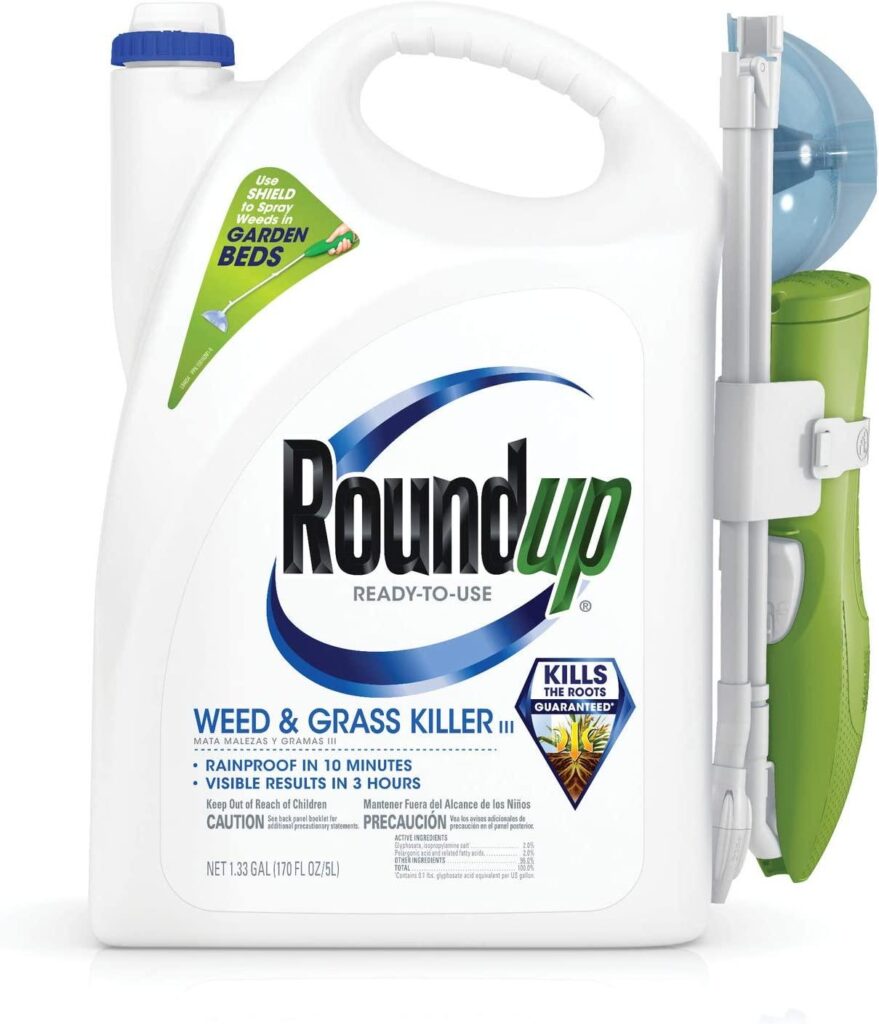
Roundup Ready-To-Use Weed & Grass Killer III — with Sure Shot Wand.
You can also target Dallisgrass and kill it with Roundup Ready-To-Use Weed & Grass Killer, which contains glyphosate as an active component. When spot treating Dallisgrass, however, exercise extreme caution because the product can also damage the grass.
So, make use of a sprayer in a very careful way. However, on the plus side, glyphosate, in contrast to other herbicides, does not pollute your lawn, and grass that has been burned will return in a short time.
Some More Tips!!!
- If you want the chemicals to penetrate deeper into the weeds’ leaves and have a more significant impact, wait to mow your grass after you’ve applied the chemical treatment.
- Pull out the stubborn weed by hand and make sure the roots are dry. If you leave them with some dirt, it will simply stimulate them to put on more growth.
- If crabgrass has already established itself in your garden, you can eliminate it by using a post-emergent herbicide to the affected areas.
- You can also suppress the weed by mowing correctly. For crabgrass to not be, you should cut at the height of 2 to 3 inches. It cannot thrive in the shade.
- Digging it out with a garden hoe or applying post-herbicides is an additional method that can be used to prevent the spread of Dallisgrass.
- Take care not to cross-contaminate your grass. After working in an area with weed growth, make it a habit to clean your tools and equipment.
- The life cycles of both of the weeds are known. So, the most effective strategy is eradicating weeds before their seeds can germinate or fall to the ground.
Final Thoughts
And that is all the differences between the Dallisgrass and the crabgrass. In general, it is recommended that you strive to stop their growth by adequately tending to your garden. You can accomplish this goal by providing your lawn with adequate amounts of water and repairing any damage to your yard to get rid of bare spots that could foster the growth of crabgrass and Dallisgrass. In addition, maintain a regular fertilization schedule so your grass stays lush, green, thick, and inhospitable to weeds.
Frequently Asked Questions (FAQs)
Is Dallisgrass the same as crabgrass?
Dallisgrass is a taller, more erect weed. On the other hand, crabgrass has larger leaves, grows lower to the ground, and frequently is quite similar to St. Augustine grass. Comparing the seed heads of these two weeds is the most reliable method for telling them apart.
Does crabgrass killer also kill Dallisgrass?
Herbicides can kill crabgrass, such as oxadiazon, benefin + oryzalin, bensulide, DCPA, pendimethalin, dithiopyr, oryzalin, or prodiamine, are also effective in controlling dallisgrass.
Bear in mind, however, that Bensulide, DCPA, and oxadiazon are only intended for use in a professional setting and may be subject to some limitations in the case of residential lawns.
Does vinegar kill Dallisgrass?
After being heated and reduced to a more concentrated form, vinegar can eliminate dallisgrass from the area. Just make sure to apply it to the dallisgrass when it is still hot by pouring it on. Take special care not to get any of it on the plants you intend to keep.
Can you dig up Dallisgrass?
To effectively control Dallisgrass through digging, you must act quickly when there are still only a few clusters. First, dig every bunch and all of its connected root mass out with a sharp spade. Next, immediately start replanting new sod into the empty space.
How do you identify Dallisgrass?
Dallisgrass is a clumping, coarse-textured grass with a membranous ligule, a distinctive grayish-green hue, and a few scattered hairs on the leaf collar. Also, there could be hairs near the base of the leaf blade as well.
Sources For Further Reading
Dallisgrass Management Guidelines – Agriculture and Natural Resources, University of California
Postemergence Control of Crabgrass and Other Summer Annual Grasses in Lawns – The Pennsylvania State University Extension Service
Dallisgrass in Turfgrass – Control Procedures for Professionals – Texas A&M AgriLife Extension
Editor’s Recommendations
Help! I Put Gas In The Oil Tank Of My Lawn Mower | How To Fix It Fast?
Grass Spiders: How To Get Rid Of Them? A Comprehensive Guide







